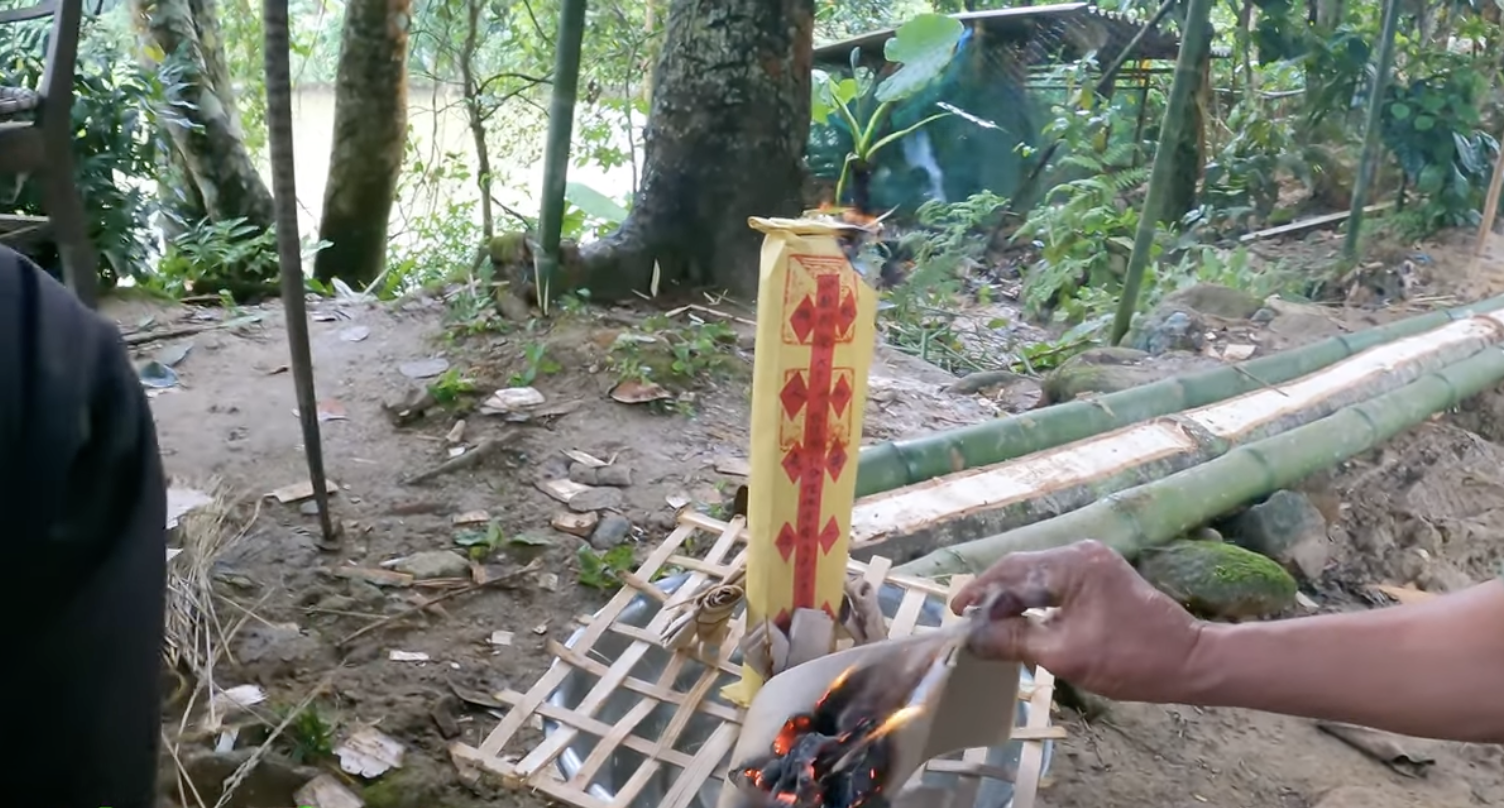
Yen Bai province currently has over 100,000 Dao people of four main grounds, including Red Dao, Dao with tight pants, Dao with white pants and Dao Lan Tuyen. The Dao people live in all districts, towns and cities of Yen Bai.
Today, the Dao people still preserve many customs and rituals, notably the longevity ceremony and the cap sac ceremony. Particularly for the Red Dao community in Yen Bai, besides the two important rituals above, the custom of bridging to relieve bad luck has also been preserved and promoted by the community for many generations.
The Red Dao people believe that by performing the rutuals of bridging to relieve bad luck, they can dispel bad luck and gain good health, happiness and peace. Therefore, when a family member is sick, they often hold a bridging ceremony, hoping to resolve all bad luck and bring about a peaceful and healthy life.
Before carrying out the bridging ritual, the homeowner prepares a piece of wood with a diameter of about 40cm, 5m long and 8 bamboo sticks to prepare for bridging. About 1/3 of the piece of wood is cut and the rest is used to make a bridge. The two ends of the piece of wood and the middle are engraved with a cross. The 3-span bridge in Yen Bai's Red Dao language is called tang sang poz.
In the past, the bridging ritual used to be held at small streams and ditches. The wooden piece is spanned across the stream, 8 pieces of bamboo are arranged on both sides. At both ends of the bridge and in the middle are 6 stakes inserted into the ground to keep the bridge sturdy, and 2 large stones are placed on both ends of the bridge. On both sides of the bridge are 10 bamboo trees placed upside down, with 10 small baskets hanging. Inside each basket are 2 sticky rice cakes (gzúa tzieng). Casuarina tree leaves are twisted into long ropes to connect the 10 bamboo trees together. Dao People believe that the more carefully the bridge is prepared, the better it is for the health of the person who need to relieve bad luck, and the place where the bridge is built must have a water source running through.
The ritual must have the presence of “tam thanh” painting set of the Dao people. These paintings are hung above the altar on the bank of the stream where the homeowner built a shack as a place to conduct the ceremony. The offerings include 3 boiled chickens, 5 cups of water, 5 cups of wine, and a bowl of incense containing 9 incense sticks that are lit to notify ancestors and gods.
When drums and gongs resound, it is the time when the bad luck-relief rituals begin. The first shaman and the second one stand on each bridgehead. The first shaman stands on oen bridgehead blowing the horn to invite the gods to come down and witness the homeowner's bad luck-relief ceremony. He pours more wine into 5 cups while worshiping, praying and blowing the conch to pray in the ancient Dao language: "Today is a good day for the family to hold a ceremony to relieve bad luck, thank the ancestors and gods. On behalf of the homeowner, I ask the gods to bless him/her to always be healthy. If the soul has gone the wrong way, please come back. If you are sick, you will no longer be sick. Illnesses and all troubles will pass quickly."
At the same time, the second shaman on the other side of the bridge summons the soul. The person who needs to relieve bad luck sits next to the second shaman to be cast with good luck charms. After this ritual, the family brings a tray of food and places it right at the bridgehead for the person to be released from bad luck and family members to eat together (nahn vuon) with the meaning of praying for health, luck, and peace. Then, while gongs and drums resound, the person who needs to be relieved from bad luck is led across the bridge by a person, followed right behind by a family member carrying a rooster. This ritual implies that healthy people will bless the person who needs good luck.
The ritual is only performed when family members of the Red Dao people are sick. This ritual is usually prepared by the homeowner and shamans one day in advance and the main event takes place from early morning to late afternoon of the next day.